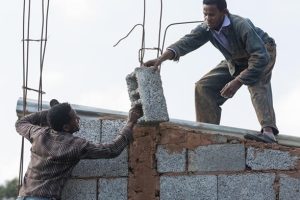
Ethiopia has enormous must-see cultural festivals. The soon to be celebrated Ashenda, Shadey, Sollel, Kese Acheda festivals are the prominent ones. The festivals annually celebrated in Tigray and the Amhara Regional States bringing together culturally dressed women who display true color of beauty and dance.
The festivals celebrated in August marks the ending of the fortnight fasting period called filseta. The celebration of the festivals shows a few variations from place to place.
While Ashenda is celebrated in Tigray, Shaday is also a version of Wag Hemra zone. Ashendye and Solel with similar celebration styles are also celebrated in Lalibela and Raya Kobo respectively, and Kese Acheda is also celebrated in East Gojjam of Amhara state.
Kese Acheda is celebrated by damsel girls who dress with traditional new cloth meet each other begin their journey to collect Kese (a plant known as Lippiaadoensisin its scientific name) with sweet-sounding euphonious traditional singing. Grouping of Young aged males follows girls after minuets with their cultural hot melodic song. The girls go to the relative far forest to collect perfuming plant named Kese which is used to green floor.
Kese Acheda old-aged but the endangered festival is celebrated every August 16 of Ethiopian calendar in some parts of East Gojjam zone of Amhara Regional State. Kese is a local amiable plant where the celebration is named after.
Wudalat Almaw is Culture and Tourism Department Head of East Gojjam zone. The celebration of Kese Acheda is started for three years within the government initiated deliberations following the fading away of the celebration, she said. The celebration was known in Enemay, Shebel Berenta and Enarji Enawuga localities of the district.
Damsel girls and young males are the participants of the celebration with traditional dressing style. The celebration is started on the morning of the day with traditional songs of groups of girls.
Shebel Berenta Woreda Culture and Tourism Bureau Head Anguach Damen told The Ethiopian Herald that the celebration is known as a day of damsels. To her, the preparation is finalized to celebrate the day. Adding the celebration is little known among current generation; however, it has been celebrated for centuries, she said.
To her, Kese Acheda received little attention but regional and zonal culture and tourism bureaus have joined hands to work together to promote the festival years before. “We are glad to see the progress of restoring the cultural values of the celebration,” she remarked.
Belaynesh Awoke, 25, was born and raised in the rural locality of Shebel Berenta. She still remembers the celebration. But she said: “The festival has become one of the endangered value of the community. All my old friends and I were curious to celebrate the festival unlike these days,” she said.
A senior citizen from Shebel Berenta district told The Ethiopian Herald that the celebration was initially a day of sweethearts and was marked with adorable theatrical conversations including poems.
“It is all in my mind, he remembered. When I was about 20, all of the youngsters of the community were highly ambitious to celebrate Kesea Acheda. All male youngsters bring hair lotions for their sweethearts and present the lotions after chanting songs. It is a moment to select sweethearts as well,” he said.
“I’m excited to see efforts to restore the aged-old celebration. It reminds me of my childhood life which was full of inimitable memory,” he said.
The Ethiopian Herald August 16, 2019
BY YESUF ENDRIS





